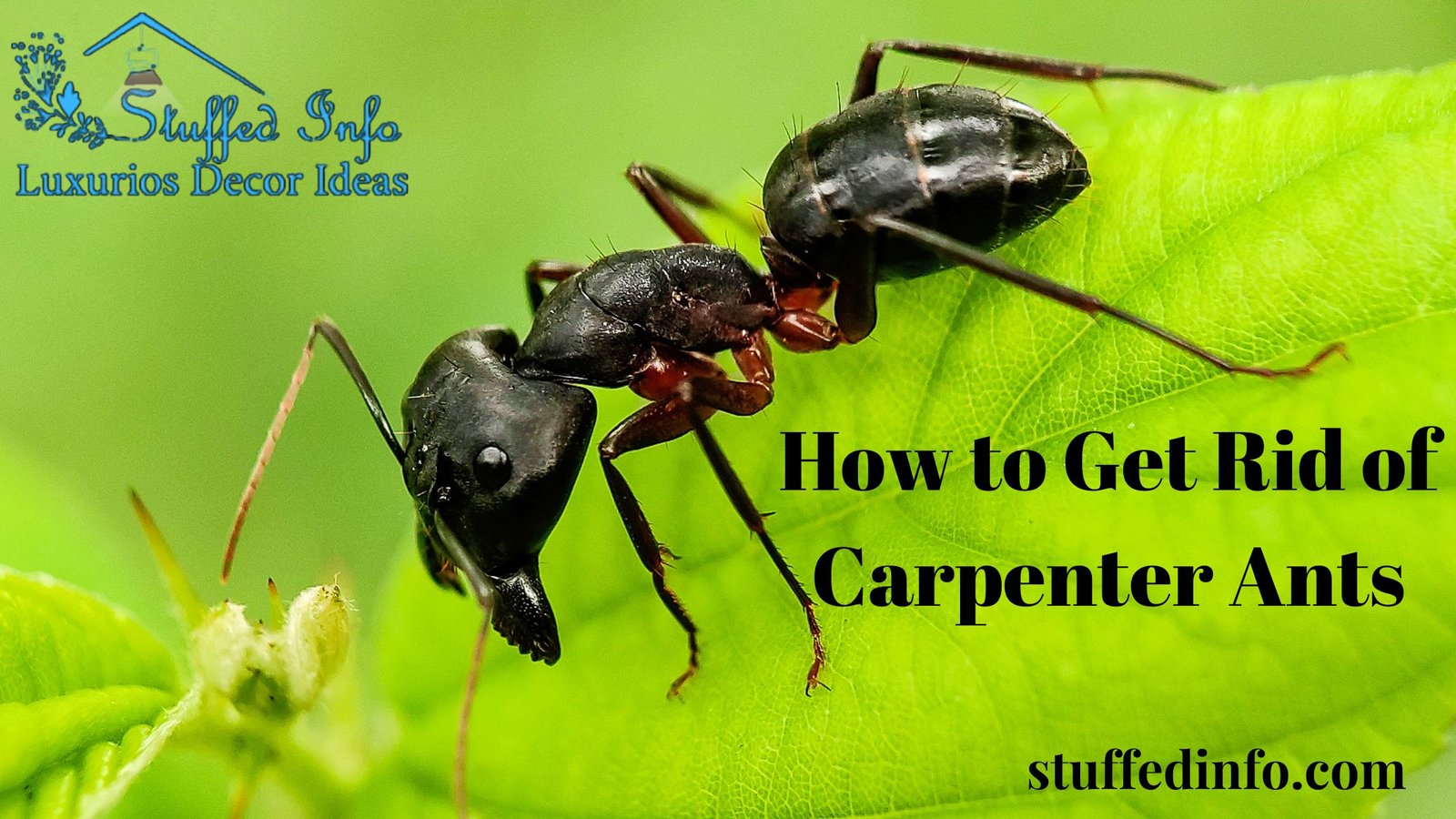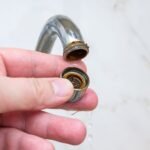Insects, such as ants and termites, cause damage to wood, which is a nightmare for several homeowners. Therefore, such pest-related issues stem from wood damage. Consequently, they cause thousands of dollars of property damage whenever they are not addressed.
However, it is not until the problem has escalated, and the damage has been done. This guide will explain what carpenter ants look like, how to Get Rid of Carpenter Ants, and how to prevent them from returning.
Table of Contents
ToggleEasy Ways to Identify Carpenter Ants in Your Home
Detecting ant infestation is important to prevent further damage and expensive repairs. Let’s examine the ways you can locate ant infestation and ways to get rid of carpenter ants.
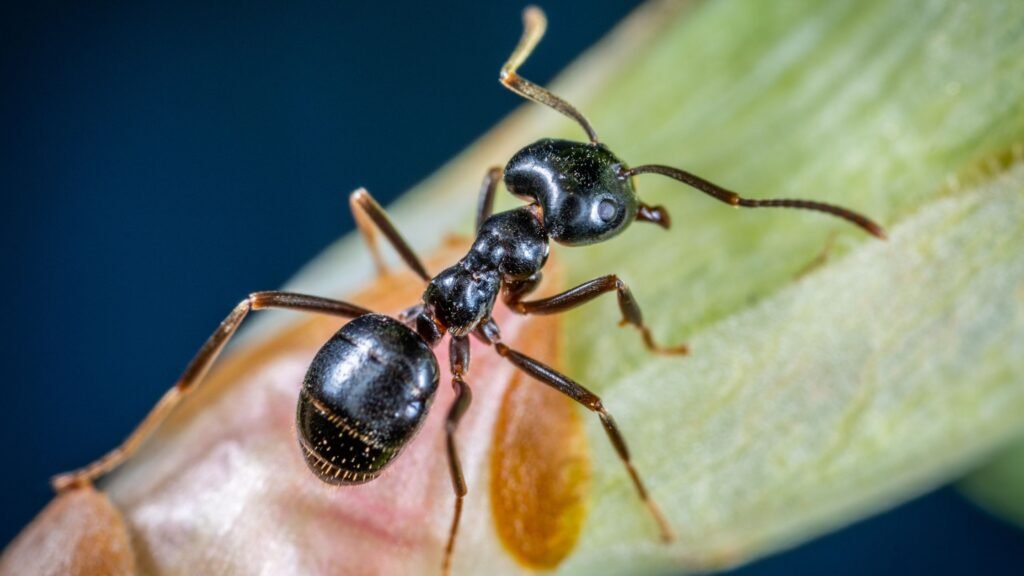
- Size: Carpenter ants are larger than most other ant species. It ranges in length from 1/4 of an inch to 1/2 of an inch. Carpenters can be even larger, depending upon their role within the colony.
- Color: Black. They are bicoloured, such as black with a red or orange tint. Overall, their color pattern distinguishes them from other ants.
- Nesting sites: Small piles of wood shavings are usually called frass. These are often located near wooden structures or in secluded areas. Frass is a lot like sawdust, but it’s definitely not that.
- Sound: Even silent environments may produce a soft crackling or clicking noise. Such noise has proven to be a startling sign of their existence.
- Visible Trails: Carpenter ants are known for making visible trails as they forage on food. During warmer months, look for a constant flow of ants going in and out.
4 Common Causes Behind Ant Infestation At Home
Addressing the issues with ant infestation can help save some major issues at home. Knowing about the possible risks helps homeowners to take the best preventative measures and ways to get rid of carpenter ants?
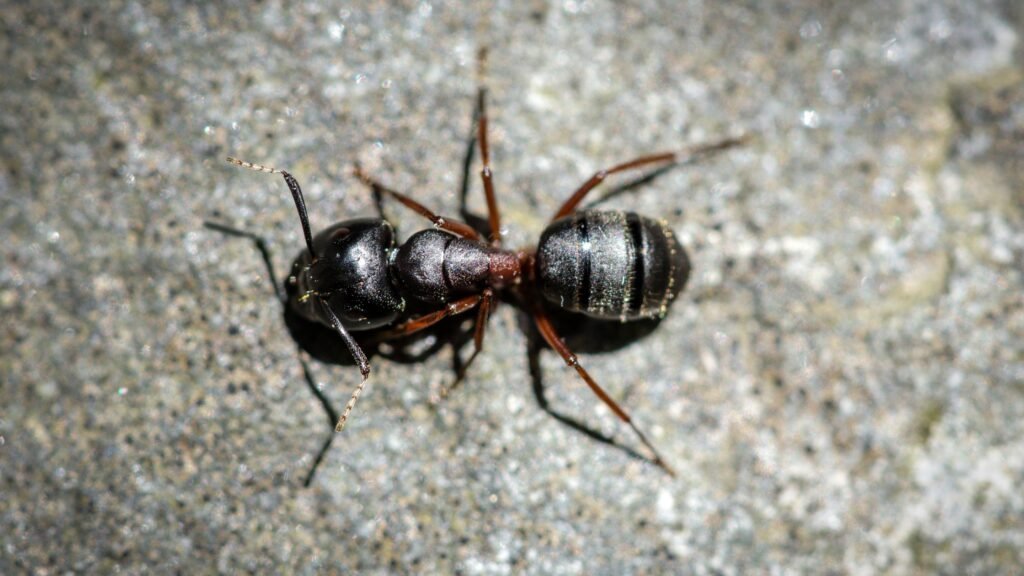
- Structural Damage: Carpenter ants excavate wood to build their nests, causing significant structural damage. Unlike termites, which consume or eat wood, carpenter ants hollow out the wood. It weakens the wood on the beams, joists, and other essential supports in your home. This affects the safety value of your property and can cause accidents.
- Increased Repair Costs: If left untreated for a long time, infestation will cause more damage. It also raises the repair costs significantly. Timely intervention is required. Removing the infestation could avoid expensive renovations and replacements in the future.
- It attracts other pests: Even if the ants themselves are not an issue, their presence can indicate other problems. Carpenter ants attract other pests like termites and roaches. They are an indicator of a much more significant problem. When left unchecked, it could easily evolve into something far worse.
- Health Risks: Carpenter ants pose no direct health risk but may indicate damp conditions that promote mold growth. This could cause respiratory diseases and more complicated health issues. Especially those with allergies or asthma. Carpenter ants’ nests also contain bacteria, which further complicates health-related issues in your home.
7 Methods to Control Carpenter Ant Infestations Effectively
The initial step to get rid of carpenter ants is locating the wood piles. Also, look into the parent colonies and the nearby satellite colonies. The combination of insecticide and baiting combats the infestation of carpenter ants.
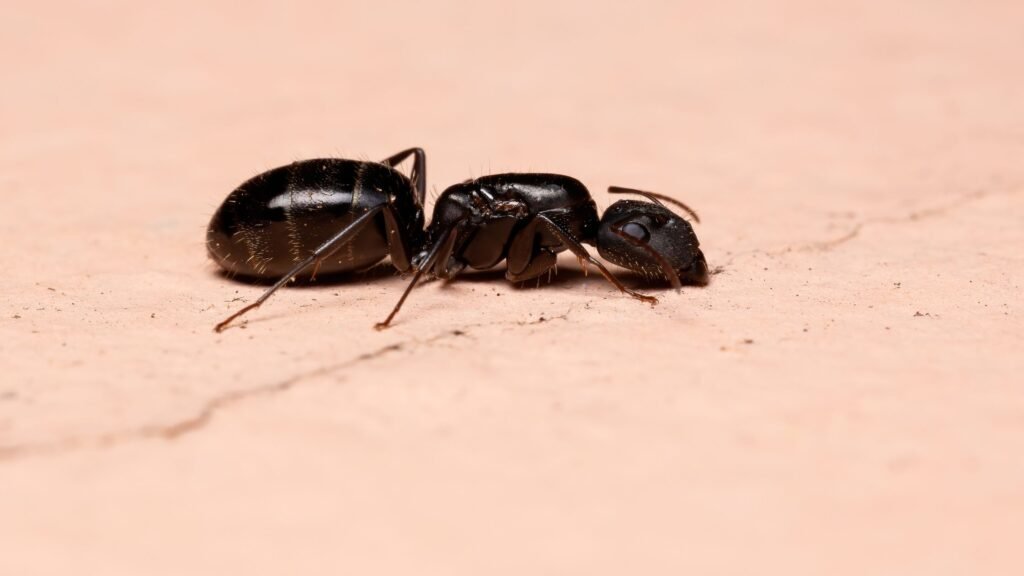
Bait
Position carpenter ant bait on the trail formed by ants or near their nest. These worker ants transport the bait to the central and satellite nests. Several types of ant baits are necessary. Because the ants will have to go for at least one of the baits, do not place insecticides close to the bait because the carpenter ants will not feed on it. By doing this, you will be able to get rid of carpenter ants.
Non-repellent insecticides
These insecticides are less conspicuous to the ants. Therefore, it increases the chances of the ants passing through them. The non-repellent insecticide gets transported back to the parent colonies. It is where queen ants and more of the population are killed. Treat the exterior walls up to a height of 3 feet and a distance of 3 feet away from the walls.
Dust
Spread insecticide dust over a chopped area of carpenter ants. It intoxicates and eliminates them. Because of the duster attached, applying the insecticide becomes easier. You can spray it around areas like baseboards, wall voids, or door frames. This method is straightforward and permanent. Therefore, it is a highly effective way to get rid of carpenter ants in any home.
Aerosol
If carpenter ants are wrecked to be in a cavitation wall, aerosol is said to be an effective way to deal with them. Take an aerosol spray bottle, fill it with a solution containing some insecticide, and put a crevice tip on it; based on the infestation, drill several eighth-inch holes around the area that is infested and then spray over the various areas to take care of the entire colony. It would be one of the best ways to get rid of carpenter ants.
Boiling Water
If you have found ant trails outside, using boiling water is a great temporary solution. Heat a pot of water and then spill it over the area frequented by the ants. The boiling water will smother, burn, and suffocate the ants on the surface of the water. You might have to do this a few times. But it is easy and will not necessitate the services of a professional exterminator.
Dish Soap
Take three parts of water and one part of liquid dish soap, stir the solution, and pour the mixture into a spray bottle. The soap is poisonous to carpenter ants and will, therefore, prove fatal to them. For a do-it-yourself remedy, you can also spray it in areas where ants are likely to gain entry into your compound.
Baking Soda
To get rid of carpenter ants, mix one part baking soda to one part powdered sugar. Use it to surround a nest—the sugar will attract the ants. The baking soda will effectively kill Ants. Repeat this to maintain control over the number of carpenter ants. Especially around your home or establishment.
Conclusion
In this blog, we have explained different causes and the best ways to get rid of carpenter ants. You can implement these suggestions and if you seem occupied with other commitments then you can get the assistance of industry experts. They have years of experience and will guide you professionally.
Frequently Asked Questions
What Repels Carpenter Ants?
You will probably find a number of suggestions concerning smells. Vinegar keeps carpenter ants away, as substances that kill carpenter ants are hazardous. Vinegar will eliminate their pheromones, but no stench will deter them.
Do Carpenter Ants Bite?
Carpenter ants have powerful mandibles. These are necessary for boring through wood. Therefore, the intentional biting of people or their pets is improbable. They are not blood-feeding insects, so they do not bite unless they are Invited to do so.
What Is the Best Natural Way to Get Rid of Carpenter Ants?
The best-known technique for controlling carpenter ants is eliminating their anthill. And repairing the infested sections with wooden decay. A few natural remedies that get rid of carpenter ants include borax, diatomaceous earth, or pyrethrin.


